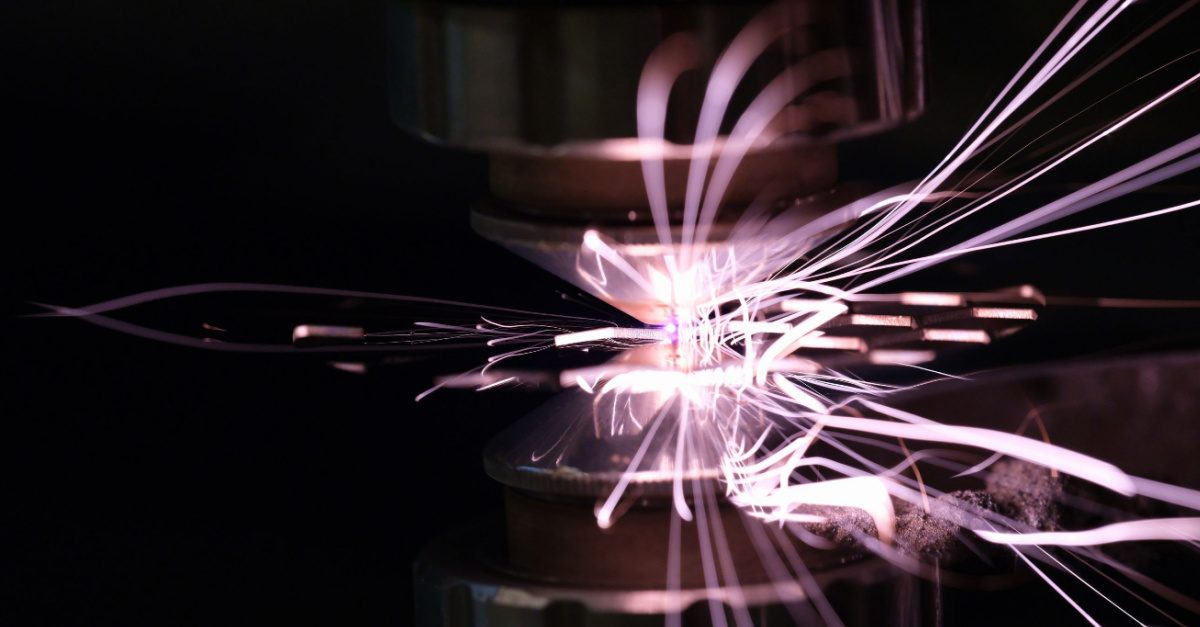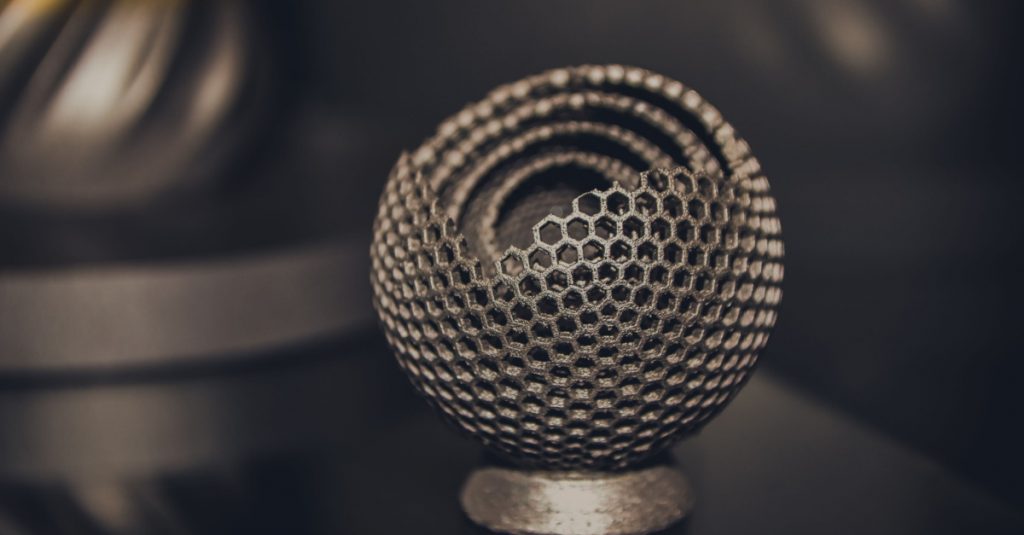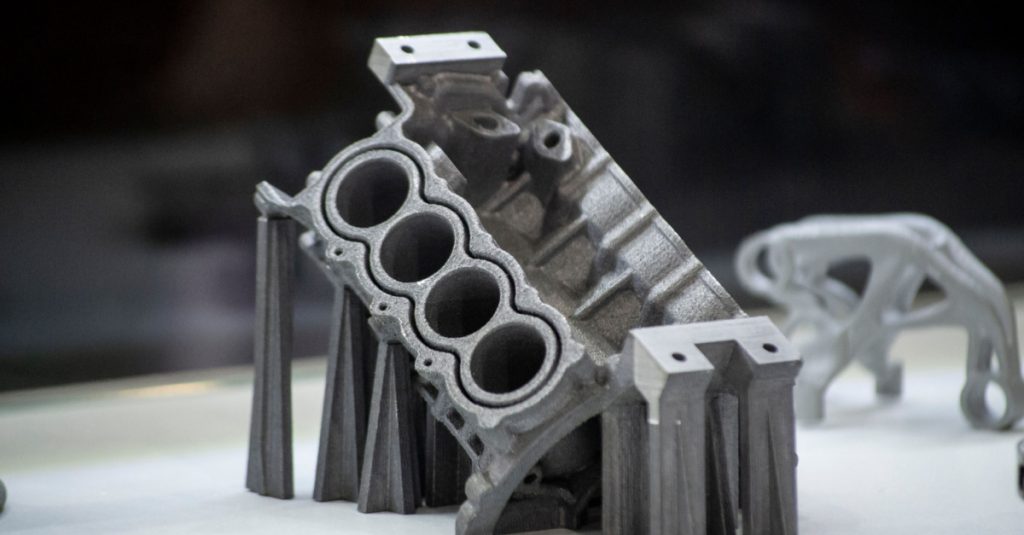
Additive manufacturing (printing technology) is a revolutionary technology that integrates advanced, digital, intelligent, and green manufacturing. It changes not only the manufacturing mode of products but also the mode of production and life in the future.
Today, rapid prototyping technologies, including CNC prototyping, casting mould, injection moulding and 3D printing, are used in various applications. Primarily 3d printing technology is widely used in prototype manufacturing, mould verification and direct manufacturing. Direct manufacturing refers to the direct use of 3D printing technology to produce the final product, which is the future critical area of 3D printing. In direct manufacturing, metal additive manufacturing is the most rapid development of additive manufacturing technology and industry. It has been widely used for customising metal parts for aerospace, biomedical, industrial mould, power energy and other related fields.
Metal 3D printing preparation method of metal powder.
According to statistics, in all metal 3D printing technologies, more than 90% of the equipment uses metal powder as the raw material. Due to the demand in the metal printing market, the consumption demand for metal powder is increasing.
Currently, the main preparation methods of metal powder are plasma rotating electrode atomisation, gas atomisation, plasma atomisation and plasma spheroidisation.
Plasma Rotating Electrode Process (PREP).
The principle of this technology is that the metal rod rotates at high speed and melts in the plasma. The liquid is crushed into tiny droplets by centrifugal force and finally condensed into powder. The particle size of the powder can be controlled according to the plasma arc current and the rotating speed of the electrode. The yield of the fine powder prepared by this method is low, generally only about 5%, resulting in high powder cost.
Gas Atomisation (GA).
There are two kinds of metal powder gas atomisation methods for 3D printing: Vacuum Induction-melting Gas Atomisation (VIGA) and Electrode Induction-melting Inert Gas Atomisation (EIGA). VIGA refers to the heating and melting of metals or alloys in vacuum crucibles, while EIGA uses pre-alloyed rods as consumable electrodes for induction heating. Both use high-pressure air flow to break the molten metal into tiny droplets and solidify it into powder. The powder prepared by VIGA usually has an average particle size of less than 100 ? m, which meets the requirements of 3D printing, and the powder yield is high. The most significant advantage of EIGA technology is that it avoids the non-metallic impurities mixed in the traditional crucible melting process, improves the purity of the powder and reduces the degree of oxidation.
Plasma Atomisation (PA).
The basic principle of PA is that the wire (? 1 ~ ? 5mm) is fed into the focus of the pre-installed high-temperature plasma, the wire is rapidly melted or gasified, and heat exchange occurs with the inert gas used for cooling in the process of deposition. The near spherical powder is obtained by solidification.
Plasma Spheroidisation (PS).
PS uses carrier gas to send the powder into high-temperature plasma. The powder particles are heated and melted rapidly. Spherical droplets are formed under the action of surface tension. After entering the cooling chamber, the spherical particles are rapidly cooled and solidified. The powder prepared by PS technology has the advantages of high purity, less hollow powder and uniform particle size distribution, so it is often used to prepare highly active and refractory metals, such as W, Mo, NB, TiN and so on.

Metal additive manufacturing process.
1. Metal additive manufacturing based on powder.
The adding material manufacturing of metal powder is mainly used in powder bed selective melting and directional energy deposition process. Metal 3D printing technology using these two kinds of process principles can produce metal parts that meet the standard of forgings. Among them, the powder bed selective melting technology can be divided into laser selective melting (SLM), and electron beam selective melting (EBSM). The directional energy deposition process mainly adopts laser technology, and the powder feeder feeds the powder.
The LMDF technology, characterised by powder feeding, is not limited by the structure of printed parts and can be used for complex structure, challenging machining and thin-walled parts. According to the relative position of the laser beam and powder feeding, there are paraxial powder feeding and coaxial powder feeding process.
2. Metal additive manufacturing based on a wire.
Wire additive manufacturing can be made by laser, electron beam or arc as a heat source. Arc has been paid attention to as a heat source because of its low price and simple equipment. Wire and Arc Additive Manufacture (WAAM) is developed based on TIG, PAW, MIG/MAG, CMT and other welding technologies. The primary forming materials are stainless steel, aluminium alloy and titanium alloy. The surface precision of forming arc components is low and generally needs secondary processing to meet the demand.
Laser wire material manufacturing has attracted wide attention because of its easy storage, high material utilisation, high printing efficiency and 100% recovery of materials.
3. Other methods.
Cold Spray Additive Manufacturing (CSAM) is a new 3D printing technology based on Cold Spray(CS). The technology does not use laser or other thermal energy. Still, it relies on kinetic energy, using two compressed gases, one of which is used as propulsion gas and heated to a predetermined temperature. The other is used as a carrier gas to run the powder. The gas and powder particles enter the gun together. Under the combined action of accelerating gas and nozzle, micron powder particles are accelerated to supersonic speed (up to 1500m/s). Then intense plastic deformation occurs when they reach the substrate to form a coating with a certain thickness and shape.

Development and prospect.
According to the production process order, metal additive manufacturing can be divided into the pretreatment stage, printing stage and post-processing stage. To obtain ideal metal components, it is necessary to realise shape control and control of metal components. It is necessary to establish a standardised program through the integrated regulation and optimisation of material, structure, process, and performance to realise the large-scale manufacturing of metal materials, to achieve the development of technology, products and industry.
Metal component design.
The traditional design is to create the product shape according to the thinking of material reduction manufacturing, and future products should be guided by design and manufacturing, innovative design structure to achieve high performance and multi-function of components. Through innovative design, a perfect optimal design scheme of metal components can be obtained from design variables such as size optimisation, shape optimisation and topology optimisation. In metal additive manufacturing, topology optimisation is the best method to realise lightweight structure design. Through bionic structure and lattice structure, more lightweight components can be produced than traditional structures. The unique support design technology is designed and developed, which makes the printing components separate from the substrate without wire cutting, effectively shortening the pick-up cycle.
Metal printing equipment.
The manufacturing capacity of metal additive manufacturing equipment is developing to large, small size and high-speed / ultra-high-speed printing components. For the powder bed powder technology, EOS launched 4 lasers and 400mm × 400mm × 400mm generating volume equipment EOS400, which increased the productivity by four times. Small-size printing, aiming at metal printing and manufacturing of micro-nano structure. Multi-functional, intelligent and mobile metal additive manufacturing equipment is also a development trend, with a variety of processing plants (laser, electron beam, arc and heat, magnetic field, etc.) and high energy control technology, such as the integration of increasing and reducing materials, the integration of forging, nano-metal manufacturing technology and so on.
Through the 5-axis, 7-axis and 8-axis robot manipulator system, the need for supporting structure in the traditional manufacturing method can be eliminated. By introducing an additional electromagnetic field, the solidification state can be improved. The shape of the molten pool can be changed, the metal fluid flow in the molten pool can be accelerated, the defects such as pores can be reduced, the residual stress can be eliminated, and the microstructure can be refined, and the performance can be optimised. In addition, intelligent monitoring and automatic defect identification in the printing process are the future development direction.
Printing technology and post-processing of metal components.
The manufacturing process parameters of metal additives are critical to the performance of the components, such as powder thickness, thermal power, scanning speed and scanning mode, actual temperature and so on. Appropriate process parameters can obtain the ideal microstructure to improve the products’ mechanical properties, accuracy and forming efficiency.
The surface of the printed metal is relatively rough, and the mechanical properties need to be improved. The porosity can be eliminated, and the mechanical properties can be improved by heat treatment and ageing treatment, such as annealing and hot isostatic pressing. Some other methods, such as polishing technology (chemical polishing, electrolytic polishing, laser polishing, etc.), polishing and abrasive processing, are often used in the post-treatment of metal addition. In addition, it is urgent to develop new post-processing processes.

